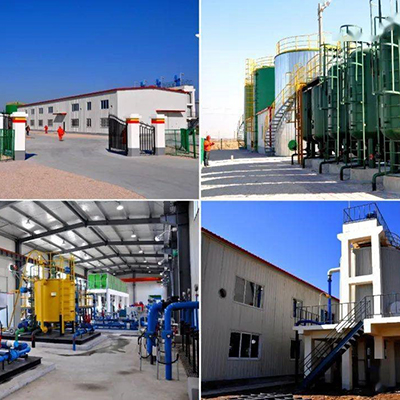
研发背景
三元复合驱在中国取得了显著的提高采收率的效果,平均提高采收率15%以上。但三元复合驱也遇到诸多问题,如:化学剂成本高,在低原油价格的形式下盈亏平衡点高,经济效益差;由于有碱的加入,导致环保压力巨大;注入工艺相对复杂,几种化学剂的注入,同时还要防垢、防腐蚀,防止地层伤害;采出污水油水分离困难,处理成本高;有色谱分离现象,影响效果。为此油田迫切需要一种兼具聚合物的高效增粘性能和表面活性剂的乳化性能的驱油剂,其具有较强的乳化基稳定性能、较高的表观粘度、适当的吸附调堵等性能,实现“一剂多能”的目标。
技术途径
以高效抗盐聚合物为主体,引入适量的亲油基团,实现聚合物高分子链。上同时具有亲水亲油的两类基团,即高分子链具有两亲结构,从而实现一定的表面活性,驱油剂既有良好的增粘性能又具有较强的乳化性能,进而实现即通过改善油水流度比、扩大注入液波体积而提高采收率,又借助乳化分散功能提高驱油效率而综合提高采收率。
技术特性
1、乳化性能是活性聚合物的主要特性之一。乳化分散作用可以提高洗油效率,乳化增稠作用可以进一步增加聚合物溶液粘度,改善剖面,扩大波及体积。这个性能是由分子结构决定的,而并非靠简单的把聚合物和表面活性剂物理混配能够实现的。活性聚合物的亲油基团可以插进油滴中,整体被吸附在油水界面上,可以较大幅度提高界面的机械性能,降低油滴碰撞聚并的几率,从而提高了乳化的稳定性。另外由于活性聚合物的乳化机理与表面活性剂的乳化完全不同因此破乳工艺也相对简单,通过多处现场试验也得到证明。
2、高效增粘性能也是活性聚合物的主要特性之一。在油田模拟污水条件下的浓度粘度试验表明,活性聚合物溶液的粘度高于同条件的聚丙烯酰胺50%以上,可显著节约聚合物用量和成本。